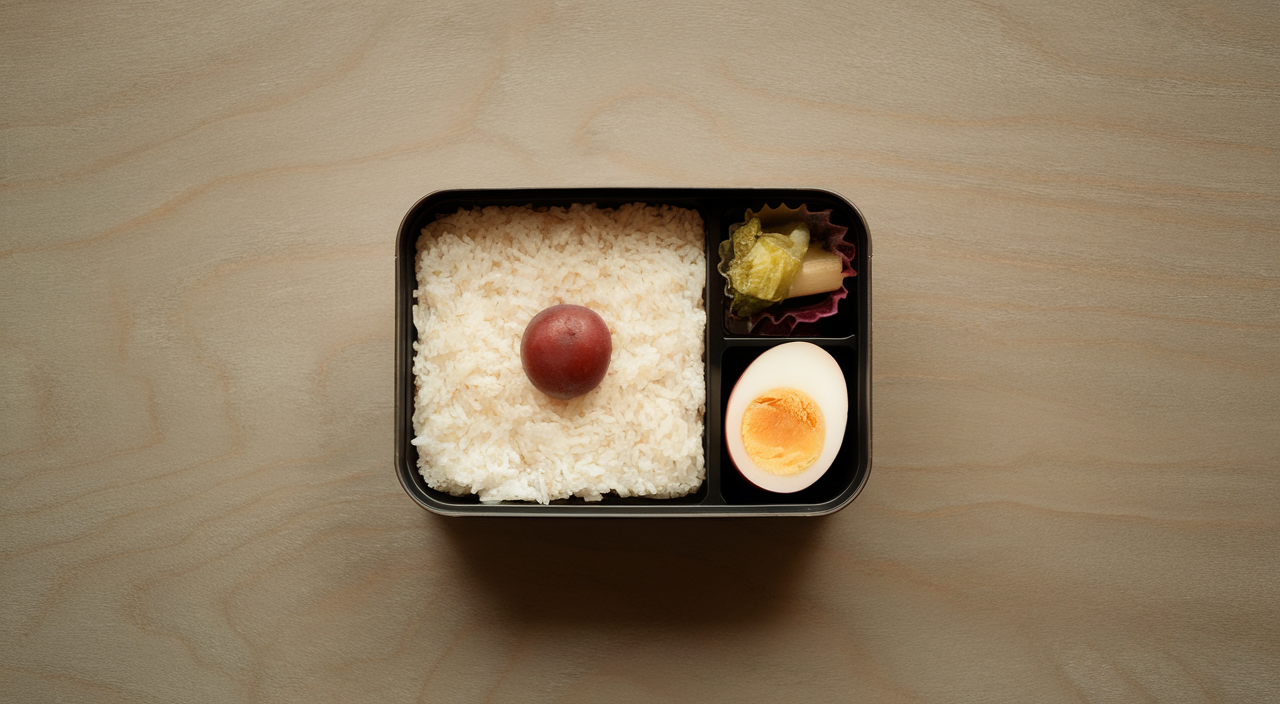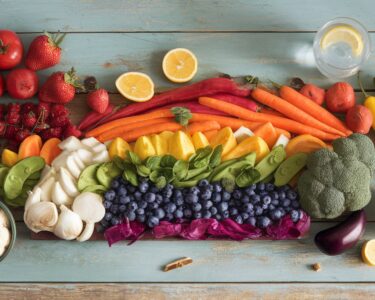The sad bento box trend offers a refreshingly honest approach to packed lunches, putting nutrition above fancy styling and embracing the Japanese concept of wabi-sabi. This movement pushes back against perfectionism in food prep, letting busy people make nutritious, practical meals in just 10–20 minutes instead of the 45–90 minutes needed for decorative bentos.
Key Takeaways
- Sad bento boxes feature simple ingredients and minimal presentation, often including just 2–4 basic components compared to traditional bentos with 5+ items.
- The trend has historical roots in wartime Japan, when scarcity led to simpler meal preparation.
- These practical lunches save time, reduce food waste, and require no special tools or artistic skills.
- Sad bentos embrace authenticity over aesthetics while still delivering on nutrition and taste.
- The movement aligns perfectly with minimalist living principles and modern busy lifestyles.
I find this trend particularly freeing for anyone who wants healthy packed lunches without the pressure of creating Instagram-worthy masterpieces. The sad bento approach focuses on function first — getting good food into your day without spending precious morning time arranging cute rice bears or vegetable flowers.
These simplified boxes typically contain a protein, some rice or grains, and perhaps a vegetable or two — all placed practically in the container without fuss. The beauty lies in their honesty and accessibility. You don’t need special equipment or artistic talent to make a satisfying lunch.
The movement connects to deeper Japanese cultural values about finding beauty in imperfection and simplicity. Rather than seeing a plain lunch as disappointing, sad bento enthusiasts appreciate the genuine nature of these meals.
For busy professionals, parents, and students, this approach makes daily lunch packing manageable and sustainable. The focus shifts from creating picture-perfect meals to consistent, nourishing habits that fit into real life.
Why Sad Bentos Are The New Food Trend You Need To Know About
The Rise of the Sad Bento Box Movement
A quiet revolution is happening in lunch boxes across social media. The Jimiben (地味弁) or sad bento box trend has captured attention with its refreshingly honest approach to packed meals. I’ve noticed this movement gaining serious momentum, with thousands sharing photos of their simple, unadorned lunches that prioritize sustenance over style.
Much like the sad girl dinner phenomenon, these modest meals push back against the pressure to create picture-perfect food presentations. Rather than spending hours crafting elaborate designs, sad bento box enthusiasts embrace quick, practical meals that still deliver on nutrition and taste.
Breaking Down the Sad Bento Box Appeal
The beauty of a sad bento box lies in its straightforward preparation. While traditional decorative kyaraben boxes demand 45 to 90 minutes of careful arrangement, I can put together a satisfying sad bento in just 10 to 20 minutes. This time-saving aspect makes it a practical choice for busy weekday mornings.
Here’s what makes sad bento boxes so appealing:
- They celebrate imperfection through the Japanese concept of Wabi-sabi
- No special tools or artistic skills required
- Focus on functional, nutritious ingredients
- Perfect for meal prep beginners
- Reduce food waste by using leftovers
- Less pressure to create Instagram-worthy presentations
The sad bento box trend taps into something deeper than just convenient lunch packing. It’s about finding freedom from perfectionism in our daily routines. By embracing these humble lunch boxes, I’m part of a growing community that values authenticity over aesthetics. The movement proves that a satisfying meal doesn’t need to look like it belongs in a magazine – it just needs to fulfill its purpose of providing nourishment and satisfaction.
The Real Beauty Behind These Basic Lunch Boxes
Finding Beauty in Sad Bento Box Simplicity
The sad bento box trend captures a raw, unfiltered approach to Japanese lunch preparation. At its core, this style features plain white rice crowned with a solitary umeboshi plum — a combination historically known as Hinomaru Bento. Just like its cousin the sad girl dinner, these lunch boxes embrace imperfection and simplicity.
I’ve noticed that modern sad bento box arrangements often limit themselves to just two to four basic ingredients. This stands in sharp contrast to traditional bentos, which typically burst with five or more colorful components. The muted color scheme and minimal garnishes create an honest representation of everyday meals.
The Historical Roots of Sad Bento Box Culture
This stripped-down style isn’t just a modern trend — it has deep historical roots in wartime Japan. During times of scarcity, families had to make do with limited ingredients, leading to the birth of these simple lunch boxes. Today’s sad bento box movement pays homage to this history while adding a modern twist.
Here’s what makes these understated lunches special:
- They prioritize function over elaborate presentation
- They reduce food waste through minimal ingredients
- They save time during busy mornings
- They celebrate authenticity in meal preparation
- They align perfectly with minimalist living principles
I’ve found that the beauty of a sad bento box lies in its unpretentious nature. It’s a refreshing departure from the pressure to create picture-perfect meals. Instead, it focuses on sustenance and practicality, making it a sustainable choice for daily lunch preparation.
The modern interpretation of these basic lunches proves that sometimes less truly is more. By stripping away the complexity, we can appreciate the genuine essence of a meal — something that’s particularly relevant in today’s fast-paced world.
How Time and Budget Constraints Created a Cultural Movement
The Rise of the Sad Bento Box Movement
Let’s be real – not everyone has time to craft picture-perfect lunches. That’s exactly why the sad bento box trend has taken off, especially among busy students and professionals looking to save both time and money. I’ve noticed this style of bento becoming increasingly popular, similar to how sad girl dinners captured social media attention.
A sad bento box isn’t actually sad at all – it’s practical, budget-friendly, and gets the job done. These lunch boxes typically feature simple ingredients that don’t require master-level cooking skills: pre-cooked rice, basic tamagoyaki (rolled omelet), boiled vegetables, and those cute little cocktail sausages that bring a touch of fun to any meal.
Simple Ingredients, Smart Solutions
The beauty of a sad bento box lies in its straightforward approach. Here are the key elements that make these bentos both practical and satisfying:
- Leftover rice or pasta as the base
- Quick-cook proteins like mini sausages or boiled eggs
- Pre-cut vegetables that can be steamed or eaten raw
- Store-bought items that add variety without extra prep time
- Basic seasonings and sauces for added flavor
While traditional bento boxes might showcase intricate food art and careful arrangement, the sad bento box movement celebrates efficiency. I’ve found that these simpler lunches still pack plenty of nutrition – they’re just wrapped in a more honest, everyday package. They represent a shift in priorities, where getting enough sleep and maintaining a practical routine takes precedence over spending hours on food presentation.
What’s particularly interesting about the sad bento box trend is how it reflects modern life’s demands. Rather than feeling pressure to create Instagram-worthy meals, people are embracing simpler options that leave more time for other activities. This doesn’t mean compromising on nutrition – it’s about finding smart ways to maintain a balanced diet within real-world constraints.
Eating this type of lunch, especially with the poorly portioned compartments and lack of color, can feel more like a chore than a treat, as seen in this unfortunate meal prep attempt.
Sources:
SoraNews24, articles discussing “Jimiben” or “#地味弁” trends
Makiko Itoh, “The Just Bento Cookbook: Everyday Lunches To Go”
Japanese culture forums discussing Wabi-sabi aesthetics
Food blogs and parenting magazines comparing Kyaraben and simple bento preparation






